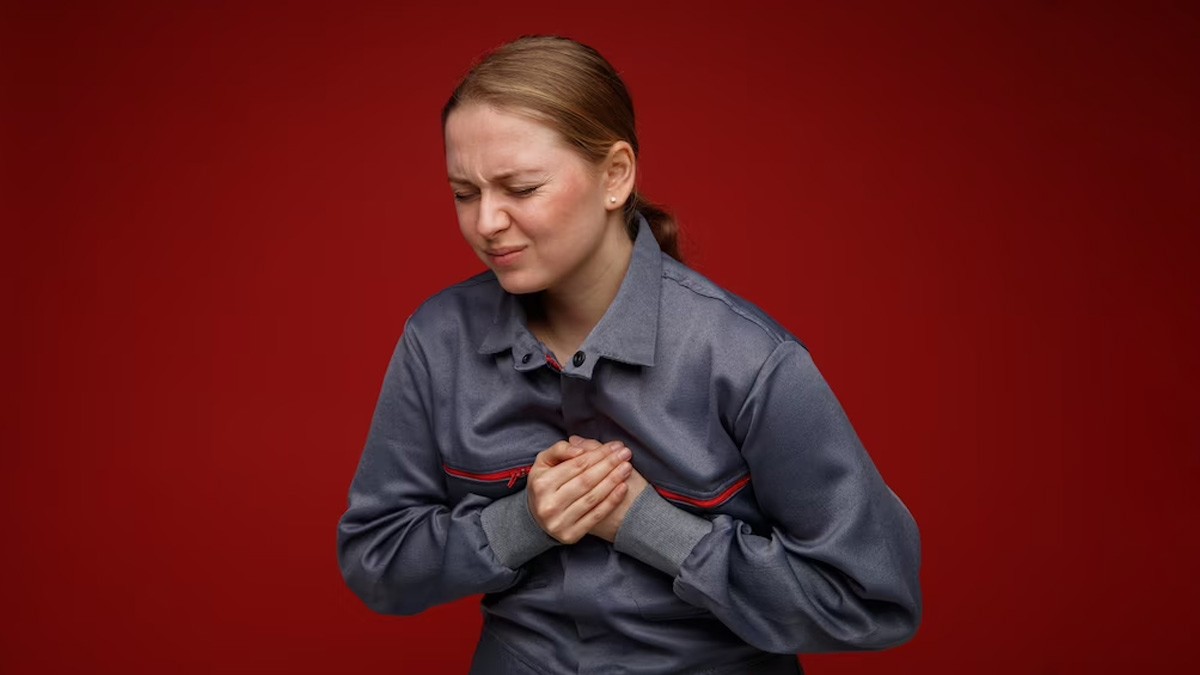
Besides factors, such as a family history of heart disease, obesity, or age, unhealthy lifestyle habits, poor dietary choices, and minimal physical activity, can also put you at risk of cardiovascular problems. While that’s the case, potentially life-threatening heart conditions like cardiac arrest can occur in anyone, regardless of age, gender, and sex. What’s more interesting is that the symptoms of cardiac arrest may manifest differently in men and women, as per experts. Here’s what you need to know.
Table of Content:-
What Is A Cardiac Arrest? Is It The Same As A Heart Attack?

A cardiac arrest occurs when all of the heart's activities come to a sudden stop due to an irregular heart rhythm, also known as arrhythmias, which prevent the heart from pumping blood.
Remember, a cardiac arrest is not the same as a heart attack. A heart attack usually occurs when the blood flow to a part of the heart is blocked. This can be due to several reasons, including a buildup of fat, cholesterol and other substances in the heart (coronary) arteries, which blocks the passage of the blood flow. Sudden cardiac arrest does not happen because of a blockage, rather, it occurs due to a change in the heart's electrical activity.
Also Read: Is Your Heart In Good Shape? 5 Important Tests That Can Tell You
According to Dr M Sudhakar Rao, DM Cardiologist, Apollo Clinic, Indiranagar, Bengaluru, cardiac arrest is a life-threatening emergency, which is why one should call for help as soon as possible.
“Although half of the cardiac arrest happens without any warning symptoms, the other half do experience some warning symptoms in preceding 24 hours, which includes abnormal heart beat, chest pain, dizziness, nausea or vomiting and shortness of breath,” he warns.
Alarmingly, cardiovascular diseases account for an estimated 1.79 crore deaths each year, representing 32% of all global deaths in 2019. Of these, 85% were due to heart attack and stroke, reports the World Health Organization (WHO).
Does Cardiac Arrest Manifest Differently In Men And Women?

Dr Rao says, “Males are more likely to suffer a sudden cardiac arrest compared to females and tend to experience the same at an earlier age,” adding that there could also be a difference in how symptoms manifest in men and women in the event of a cardiac arrest.
According to him, males experience chest pain as a tell-tale symptom, whereas women experience shortness of breath as a predominant sign.
Adding to this, Dr Chirag D, Consultant Interventional Cardiologist, SPARSH Hospital, Bengaluru, says, “Women, for instance, might experience less specific warning signs, such as nausea and unexplained fatigue or light-headedness while men often present with more classical symptoms like chest pain, or discomfort radiating down the left arm.”
What Does Research Say?

A study, conducted by researchers from the Smidt Heart Institute at Cedars-Sinai Health System in Los Angeles, US, found that 50% of individuals who experienced a sudden cardiac arrest also experienced a telling symptom 24 hours before the event.
The research published in the peer-reviewed journal The Lancet Digital Health established that the warning signs in both men and women were different. While women experienced shortness of breath as a prominent symptom 24 hours before the cardiac arrest, men reported chest pain as a dominant symptom.
While the exact cause of this difference is not known and more research is needed to establish it, experts conclude that there is in fact a difference in how symptoms of cardiac arrest manifest in men and women.
Also Read: Changes To Bring Into Your Life After Surviving A Heart Attack
What To Do In The Event Of A Cardiac Arrest
In the event of a cardiac arrest, here’s what you need to do:
- Call on emergency services (108 in India)
- Begin Cardiopulmonary Resuscitation (CPR) and chest compressions at a rate of 100-120 compressions per minute. Push hard and fast in the centre of the chest, at least 2 inches deep.
- Continue CPR until help arrives
- Provide emotional support and reassurance to the patient while waiting for medical professionals to arrive.
Early recognition of cardiac arrest and treatment with CPR and defibrillation increase the survival rate in patients, concludes Dr Rao.
Also watch this video
How we keep this article up to date:
We work with experts and keep a close eye on the latest in health and wellness. Whenever there is a new research or helpful information, we update our articles with accurate and useful advice.
Current Version